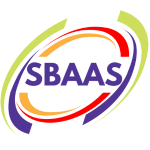Decode Before You Commit: Navigating Grant Jargon, What to Look for Before You Apply
Grants are often marketed as “free money”, a tempting proposition for any small business in search of funding. But behind every grant application is a dense set of guidelines, eligibility criteria, funding terms, and compliance expectations.
Too many business owners skim this information or worse, assume they understand it, only to find themselves tangled in red tape, trapped by unscalable requirements, or rejected outright.
That’s why navigating grant jargon is not just a matter of clarity, it’s a matter of strategy. If you don’t understand the terms, you can’t make an informed decision. And in a grant landscape as vast and varied as Australia’s, making the wrong call can cost you far more than the application was worth.
In this article, we break down how to navigate grant jargon before you apply, how to interpret common terms and clauses, and how to ensure the opportunity aligns with your business before it drains your time and energy.
Why Navigating Grant Jargon Matters
Most Australian businesses don’t fail at the application stage, they fail at the comprehension stage.
Why?
Because grant language is complex by design. Program guidelines are written for compliance officers, not busy small business owners. Misinterpreting even one clause could lead to:
- Wasted hours preparing an application you were never eligible for
- Accepting funding with unrealistic delivery requirements
- Missing out on stronger, better-aligned opportunities
- Damaging your business’s reputation with funding bodies
By navigating grant jargon, you take control of the process instead of being led by it.
The Most Common Jargon You’ll Encounter
Let’s start with the most frequently misunderstood terms in Australian grant documentation—and what they actually mean.
Eligibility Criteria
Seems straightforward, right? It’s often not.
When navigating grant jargon, look for:
- Must-haves: Registered ABN, years of operation, GST registration
- Exclusions: Certain industries, business sizes, or types of legal entities
- Hidden timeframes: Funding only for businesses trading for more than 12 months, or projects starting after a certain date
Many businesses apply assuming eligibility, only to be filtered out early by automated systems.
Project Scope
You may read “innovation” and think it applies to your new service offering. But does the funding body mean R&D, or commercialisation, or advanced tech?
Always clarify:
- What kind of projects qualify?
- Is the definition aligned with your business’s goals?
- Are pilot programs, existing initiatives or new activities eligible?
Vague language is common. If unsure, reach out to the funding contact provided; if they don’t offer one, that’s a red flag.
Co-contribution
A seemingly small footnote that can have massive financial implications.
If a grant says “50% co-contribution”, it means:
- You need to fund half the cost of the project, either in cash, in-kind contributions, or both
- You must prove you have those funds on hand or committed
Navigating grant jargon means knowing when a “$100,000 grant” actually requires $100,000 of your own capital, staff time or resources.
Milestone Payments
Many grants are not paid up front.
Funding is released after:
- Deliverables are met
- Milestones are reported
- Reviews are completed
This affects your cash flow and resourcing. If your business can’t wait months for reimbursement, this grant may not be right for you.
Reporting Requirements
Most grants require:
- Progress reports
- Final acquittal statements
- Possibly, audited financials
If your business lacks the internal systems to track this, or the time to comply, it may be better to walk away. Understanding reporting obligations is a crucial part of navigating grant jargon.
Red Flags in Grant Language
Knowing what to avoid is as important as knowing what to pursue. When reviewing grant documents, watch for:
Ambiguous Outcomes
If the grant expects undefined “community benefit” or “economic impact”, clarify what metrics they’re actually looking for.
Overly Prescriptive Budgets
If budget categories are rigid (e.g., no admin costs, no marketing), this may limit your ability to deliver the project realistically.
IP Clauses
Some grants require that intellectual property created through the project be shared, licensed or assigned. If that’s a dealbreaker, don’t ignore the clause buried in the Terms and Conditions.
Reimbursement-Only Funding
This means you must outlay costs, then claim them back. Can your cash flow support that?
These are the critical details you’ll only find by navigating grant jargon thoroughly, not by skimming the overview.
Strategic Questions to Ask Before You Apply
Knowing what the grant says is important. But equally important is knowing what it means for you.
Ask yourself:
- Does this align with our strategic goals?
- Would we do this project without the grant?
- Can we afford the co-contribution (if required)?
- Do we have the internal capacity to deliver and report?
- Are we a realistic contender, based on past recipients or competition?
If the answer to more than two of these questions is “not really”, then the grant may not be worth your time, no matter how enticing it looks.
How to Read a Grant Document Like a Strategist
Let’s walk through a recommended reading order when reviewing a new opportunity:
- Eligibility Checklist – Filter fast.
- Key Dates – Assess the viability of your preparation timeline.
- Funding Amounts and Co-Contribution – Confirm your financial ability.
- Project Description – Do your activities align?
- Application Criteria – What evidence is required?
- Assessment Process – Is it merit-based, lottery, or first-come, first-served?
- Terms and Conditions – Particularly IP, liability and delivery clauses.
- Reporting Requirements – What are you committing to?
This process will help you interpret whether the opportunity deserves your attention, or whether it’s a polite “no thanks.”
The Role of a Grant Advisor or Coach
Many businesses default to asking a grant writer to ‘do it all’. But this misses the strategic step.
Before engaging a writer, it’s important to:
- Confirm the opportunity is aligned with your capacity and goals
- Define your project clearly
- Gather appropriate documentation
The best advisors help you with navigating grant jargon, not just writing proposals. At SBAAS, our support includes pre-screening opportunities so you avoid misalignment before the work begins.
Tools and Resources to Support Better Understanding
To improve your skill in navigating grant jargon, we recommend:
- GrantConnect – Australia’s central government grant repository
- AusIndustry – Guidance on federal business programs
- Regional Development Australia (RDA) – For location-specific insights
- Your local Chamber of Commerce – Often share decoded briefings
- SBAAS Grant Search Service – Included in our Actually Supported™ package
These resources help you keep your focus clear and your expectations realistic.
Navigating Grant Jargon When the Language Is Vague
Sometimes, even after reading the documents, you’re still unsure. In this case:
- Contact the program manager listed in the guidelines.
- Request clarification via email (always get it in writing).
- Ask for previous examples, especially around definitions or reporting.
- Engage a consultant if the language feels too opaque.
If a funding body can’t or won’t clarify its terms, that tells you something important: proceed with caution.
Confidence Begins With Clarity
Grants can open doors. They can also become distractions, diversions, and compliance nightmares—if you don’t understand what you’re committing to.
By mastering navigating grant jargon, you empower your business to pursue opportunities with eyes wide open. You save time, avoid wasted effort, and position yourself to win more often.
Because in the end, it’s not about how many grants you apply for. It’s about how many right ones you choose to pursue—and how well-prepared you are to deliver.
Want Support Navigating the Next Opportunity?
At SBAAS, we support small businesses across Australia with grant identification, eligibility reviews, jargon decoding, and strategy-first decision making. Our Actually Supported™ model ensures that you don’t just get alerts—you get guidance.
Book a consultation today or learn more about SBAAS to see how we help businesses like yours navigate the funding landscape with confidence, not confusion.

Eric Allgood is the Managing Director of SBAAS and brings over two decades of experience in corporate guidance, with a focus on governance and risk, crisis management, industrial relations, and sustainability.
He founded SBAAS in 2019 to extend his corporate strategies to small businesses, quickly becoming a vital support. His background in IR, governance and risk management, combined with his crisis management skills, has enabled businesses to navigate challenges effectively.
Eric’s commitment to sustainability shapes his approach to fostering inclusive and ethical practices within organisations. His strategic acumen and dedication to sustainable growth have positioned SBAAS as a leader in supporting small businesses through integrity and resilience.
Qualifications:
- Master of Business Law
- MBA (USA)
- Graduate Certificate of Business Administration
- Graduate Certificate of Training and Development
- Diploma of Psychology (University of Warwickshire)
- Bachelor of Applied Management
Memberships:
- Small Business Association of Australia –
International Think Tank Member and Sponsor - Australian Institute of Company Directors – MAICD
- Institute of Community Directors Australia – ICDA
- Australian Human Resource Institute – CAHRI

Trudi is the Chief Commercial Officer at SBAAS. With over 20 years of experience in finance, human resources, and operational leadership, she is known for guiding organisations through complex change with clarity, confidence, and results-driven focus.
She has successfully managed government-funded programs, including the NDIS and the Indigenous Eye Health Service (IRIS) project, ensuring full compliance with reporting and performance requirements. Trudi’s extensive project management experience extends from the implementation of new payroll systems to the delivery of complex build and renovation works, consistently meeting timelines, budgets, and stakeholder expectations.
Her practical leadership style, strong communication skills, and commitment to continuous improvement make her a trusted advisor. Passionate about the role of small businesses in Australia’s economy, Trudi is dedicated to helping them grow sustainably, perform at their best, and deliver long-term impact.
Qualifications:
- Cert IV Bookkeeping and Accounting
- Diploma of Accounting
- Diploma of Business (Operations)
Memberships and Accreditations:
- Registered BAS Agent
- Xero Payroll Certified
- SM8 Partner Certified
- Small Business Association of Australia Sponsor
-

Business in the Wonderful World of Oz – Workplace Health and Safety – A Comprehensive Guide
$29.95 Add to cart -

Business in the Wonderful World of Oz – Risk Management – A Comprehensive Guide
$29.95 Add to cart -

Business in the Wonderful World of Oz – Property Leasing – A Comprehensive Guide
$29.95 Add to cart -

Business in the Wonderful World of Oz – Intellectual Property Rights – A Comprehensive Guide
$29.95 Add to cart -

Business in the Wonderful World of Oz – Future-Ready: Navigating Change and Seizing Opportunity in Australian Business
$29.95 Add to cart -

Business in the Wonderful World of Oz – Fair Work – A Comprehensive Guide
$29.95 Add to cart -

Business in the Wonderful World of Oz – Export and Global Trade – A Comprehensive Guide
$29.95 Add to cart -

Business in the Wonderful World of Oz – Cyber Security – A Comprehensive Guide
$29.95 Add to cart -

Business in the Wonderful Land of Oz – Australian Consumer Law – A Comprehensive Guide
$29.95 Add to cart -

Business in the Wonderful World of Oz – Crisis Management
$29.95 Add to cart -

Business in the Wonderful World of Oz – The Ultimate Guide
$29.95 Add to cart
